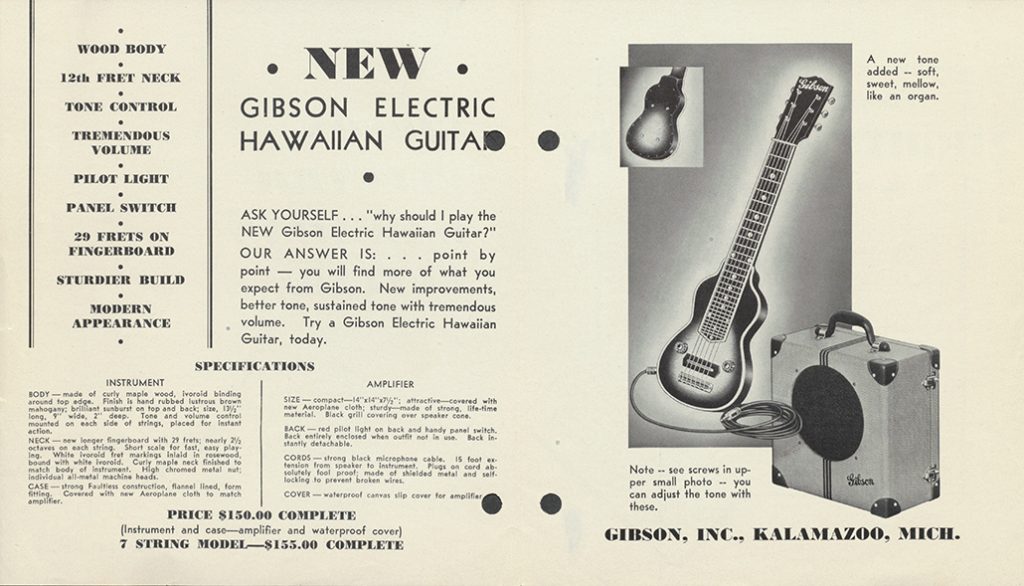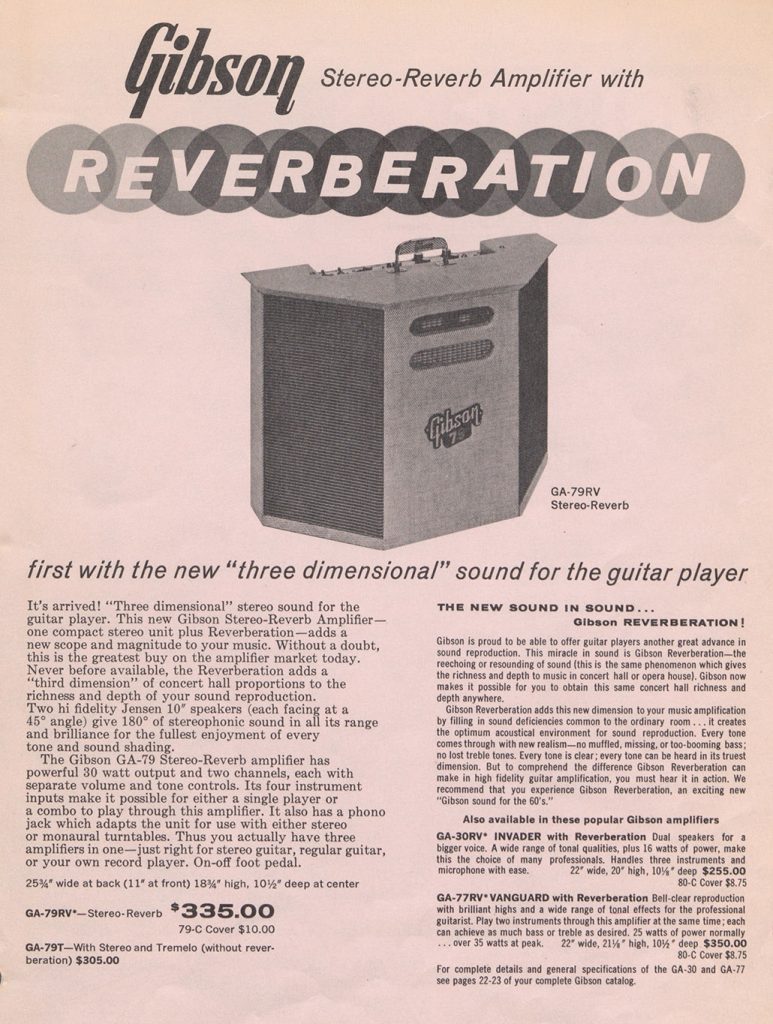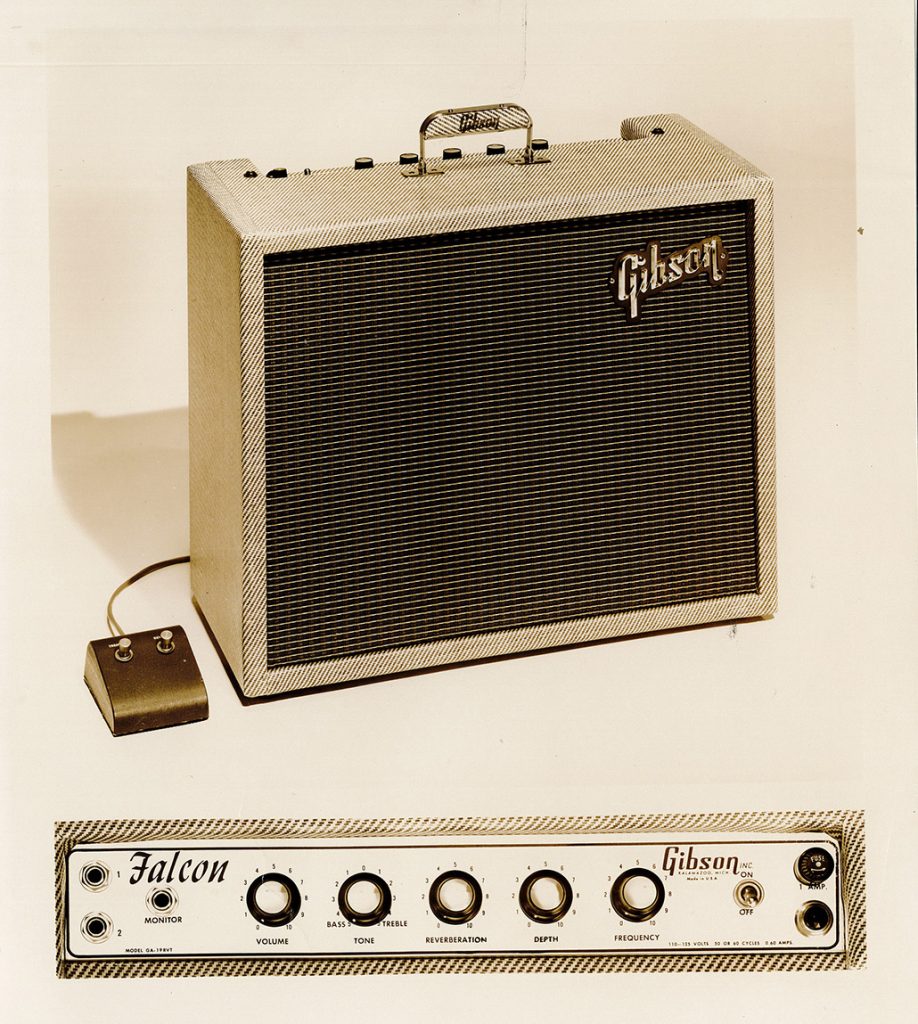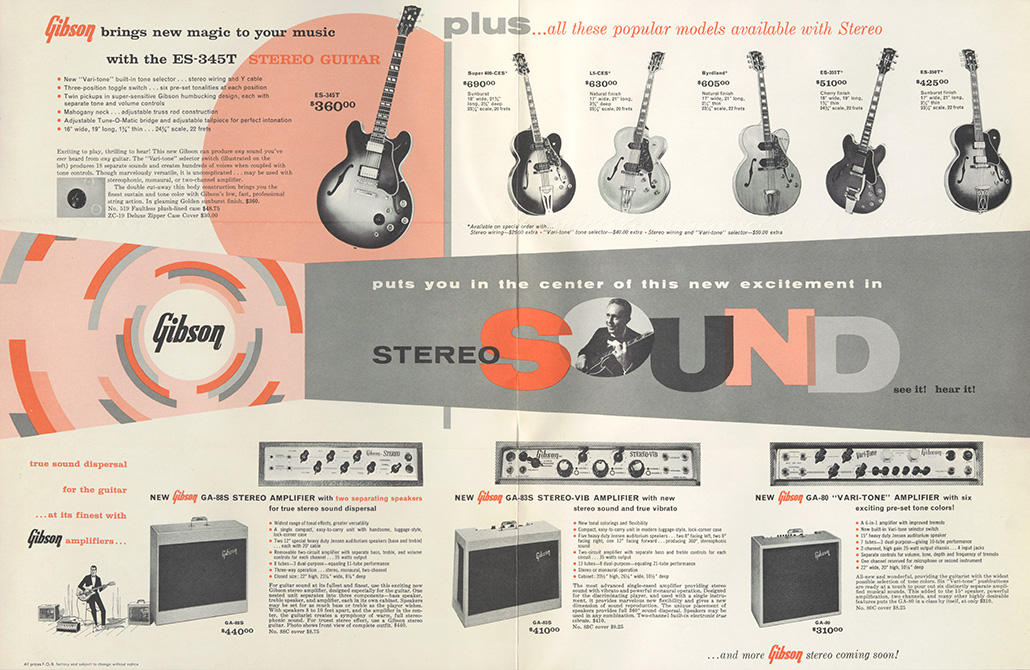From small tube combos to huge stereo rigs, Gibson amplifiers blazed a trail
In returning to the amplifier business with the Falcon 5 and Falcon 20, Gibson has drawn on a rich history of innovation that leads right back to the dawn of the electric guitar itself in the 1930s.
Building on that foundation, Gibson’s experiments with reverb and stereo sound in the late 1950s and early 60s were at the bleeding edge of guitar amplification technology. It’s this legacy we seek to explore here with a round-up of some of the highlights of Gibson’s journey into amplified sound in the 20th century.

Early moves
Gibson was at the vanguard of the new electrified Hawaiian guitar movement of the 1930s, and the EH-150—described as the “quintessential pre-war amplifier”—arrived as a companion to the E-150 lap steel in 1935.
Seen above in a brochure from 1936, by which time the amplifier was shipping with the new wood-bodied EH-150 Hawaiian guitar made from curly maple, the tweed-covered cabinet—described as “aeroplane cloth” in the original literature—set the standard for electric guitar amplifier design. It is still imitated today.
Adventures in stereo
In the late 1950s, stereo was all the rage. Alongside the new ES-345—available with mod cons such as stereo wiring, Y cable, and built-in Varitone tone-selector switch—Gibson’s Stereo Sound brochure from 1959 featured new amplifier designs promising “true sound dispersal” and “guitar sound at its fullest and finest,” via the handsome GA-83S and GA-88S combos.
In order to take advantage of the sonic possibilities, the Super 400-CES, L5-CES, Byrdland, ES-355, and ES-350 were all offered with stereo wiring via special order for a $25 upcharge.

Reverberations
Gibson was one of the first brands to incorporate spring reverb into its electric guitar amplifier designs. In addition to the original GA-19RVT Falcon developed in 1961, models such as the GA-79RV from the same year promised players “concert hall richness and depth anywhere,” hailing Gibson Reverberation as “an exiting new Gibson sound for the 60s.” Other reverb-equipped Gibson amps from 1961 included the Invader and the Vanguard.
First generation
The 1961 Gibson GA-19RVT Falcon amplifier (pictured below) featured an onboard tube tremolo effect alongside spring reverb and delivered 14 watts from a pair of 6V6 output tubes.
The instructional manual cautioned new owners to “treat it with the same care and respect given a TV set” and came complete with a page of suggested settings for everything from 25 percent reverb for a subtle ambience, to 100 percent wet. There were also guidelines on how to hook this “reverberation amplifier” up to another “regular amplifier” for a stereo effect.
Check out the new Falcon 5 and Falcon 20 amplifiers from Gibson. Looking to buy a guitar amp but don’t know how many watts you need? Check out our handy guide.


